- Home
- Gail Godwin
Publishing
Publishing Read online
IN MEMORY OF THE FIRST GIRL WHO WROTE
KATHLEEN KRAHEN BUHL GODWIN COLE
Louis Round Wilson Library, formerly the university library, now the home of the Southern Collection and Gail Godwin’s archives.
Contents
FOREWORD
Publishing Hunger
Pursuit with Interruptions
Unpublished Prosperities
Publishing Partners
Publishing Partners, Continued
The Wings of the Dove
The Good Husband, The Sorrowful Mother, and The Red Nun
Flora, the Fourteenth Novel
Performances
CHRONOLOGY
LIST OF ILLUSTRATIONS
ACKNOWLEDGMENTS
A NOTE ON THE AUTHOR
A NOTE ON THE ILLUSTRATOR
By the Same Author
Also Available from Gail Godwin
Foreword
This little volume is a meditation on publishing—on the hunger to be published, on the pursuit of publication, and on the practices and preoccupations that go with being a published writer.
In no way does it claim to be even a very small slice of the history of American publishing in my lifetime. It is more of an offering, with variations composed around a single theme, like Bach’s The Musical Offering.
Its viewpoint is personal, written by a former little girl who watched her mother type stories straight out of her head and then walked with that mother to the mailbox to gather envelopes with checks inside from a New York literary agent.
Publishing is about wanting for a long time to be a published writer and about the condition of living as a writer for a long time after you are published.
Publishing Hunger
THE GIRLS WHO WROTE
The university was a charming, an unforgettable place. It was situated in the little village of Pulpit Hill, in the central midland of the big state. Students came and departed by motor from the dreary tobacco town of Exeter, twelve miles away: the countryside was raw, powerful and ugly, a rolling land of field, wood, and hollow; but the university itself was buried in a pastoral wilderness, on a long tabling butte, which rose steeply above the country. One burst suddenly, at the hill-top, on the end of the straggling village street, flanked by faculty houses, and winding a mile in to the town centre and the university. The central campus sloped back and up over an area of rich turf, groved with magnificent ancient trees. A quadrangle of post-Revolutionary buildings of weathered brick bounded the upper end: other new buildings, in the modern bad manner (the pedagogic Neo-Greeky), were scattered around beyond the central design: beyond, there was a thickly forested wilderness. . . . It seemed to Eugene like a provincial outpost of great Rome: the wilderness crept up to it like a beast.
Thomas Wolfe, Look Homeward, Angel (1929)
CHAPEL HILL, 1958
Each spring Alfred A. Knopf, the distinguished publisher of Willa Cather, Albert Camus, Isak Dinesen, André Gide, and Thomas Mann, sent New York scouts to the campus in search of new talent. Students with manuscripts in progress were invited to present themselves at a specified classroom in the English building. When your turn came with the scout, you would hand over your five typewritten pages of the work—not a synopsis or description of what the work was going to be—and wait beside the scout while those pages were read.
My novel in progress, Windy Peaks, was going to be about the staff and summer guests at a resort hotel on the highest peak in the state. I thought of it as my potential Magic Mountain, which I had not read yet, but I would not court ridicule by suggesting this comparison to anybody, or even by hinting at such in a synopsis—which anyway wasn’t allowed by the Knopf scouts. My five pages were given over to a single character, which was a shame, considering how many people were going to be important in the book, but I had to start somewhere and I liked the idea of an intriguing young man on the make hitchhiking up the mountain at night to his summer job at Windy Peaks Manor. Though only a lowly busboy, he would insert his way into the lives of all the characters, high and low, male and female, before the summer’s end. His ambitious brain was teeming with plots and plans to make himself the leading man in his story as he stood in the dark in the thin air of that mountain road waiting for the next beam of headlights. Actually, though I hadn’t heard of that novel yet, he was more like the protagonist of Confessions of Felix Krull, Confidence Man, which Thomas Mann wrote in a burst of playfulness when he was seventy-nine.
The scouts this year were a couple. A middle-aged man wearing an ascot greeted me and told me to take a seat at any desk. I had taken a course in modern fiction (intensive readings of To the Lighthouse followed by A Portrait of the Artist as a Young Man) in this same second-floor room of Bingham Hall, looking out at Wilson Library and the quad enclosed by the old oaks and “Neo-Greeky” buildings already described by the Great American Novelist from my hometown.
His wife, the man informed me, was behind that folding screen which had been placed in front of the teacher’s desk, “so you will have your privacy with her.” He wrote my name on a clipboard and said I would be called. I plopped down in a swirl of self-conscious misgivings, unable to notice anything. Other names were called and students shuffled forward, disappeared behind the screen, and then shuffled out another door. By the time my turn came to go behind the screen, my own name sounded as nonsensical as the book title I had typed in boldface on my manila folder.
The wife-scout sat erect as a martinet in the same swivel chair in which my former professor had swayed and slouched, his cigarette ash lengthening dangerously above his necktie, as he alerted us to the many ways James Joyce was going to employ the words cold, wet, and damp for mood effects. The scout was a chic, formidable number, a little too old for the hair color to be all her own. After she had finished writing something in a notebook, she looked up as if bringing me into existence and asked if I would mind standing on her left while she read my work. “No, ma’am, of course not,” I said, wondering if there was anything sinister about her specifying the left side.
The scout’s manicured fingers (polished with a sophisticated shade of brownish mauve) were actually touching my pages. She wore an emerald wedding ring in an old-fashioned setting. On the second page she uttered a little hmpf of surprise and I was dying to ask “what?” but was afraid of jinxing the proceedings. At last, she sat up even straighter, clacked the pages together, replaced them in the folder, and handed it back to me with a crisp sketch of a smile. “Sorry, this isn’t right for us,” she said, “but good luck.” She was writing something in the notebook as the already invisible author of Windy Peaks shuffled out.
I headed up the quad, back to gloomy, echoing Bynum Hall, where I was majoring in journalism. Bynum, which had been the men’s basketball gymnasium until they got a better one, was directly adjacent to the sunny Greek Revival temple that housed the Playmakers Theater, where my mother as a graduate student had written, directed, designed, and acted in her own plays. As I slogged along inside my bubble of failure beneath the Great American Novelist’s ancient trees, it struck me for the first time that I was nothing new, just the latest model of a young person hungry for success, and possibly one of the very many who was not going to make it. I walked in my mother’s own footsteps, until she would have turned left toward the Playmakers’ sunny temple, and continued on alone to gloomy Bynum.
Looking toward Bynum from the porch of Playmakers Theater
“I walked in my mother’s own footsteps, until she would have turned left toward the Playmakers sunny temple, and continued on alone to gloomy Bynum.”
Twenty-four years earlier she had trod these paths, from library to English building to the Playmakers Theater. Her master’s thesis had been on Inigo Jones’s influence on Ben Jonson’s ma
sques. If I had known where to look in the Playmakers’ scene shop, I probably could have unearthed some of Kathleen Krahenbuhl’s old props. (“I was always very particular with my props. Proff Koch said he admired my attention to details. He always insisted on being called Proff, with two ff’s. If someone in a play I wrote had painted a picture, I painted that picture and framed it and hung it on the wall of my set.”)
My mother and I told each other stories as soon as I could form a sentence. She told me about her triumphs at Chapel Hill, her plays, her professors, her boyfriends. Those were her happy years. Two years later, she would be sitting on her parents’ porch when a handsome man with a broken ankle swung by on crutches and her dog ran out and bit him. Within a few months she had married him, already knowing it wouldn’t last.
We made up stories together, in which I was allowed to do awful things under the alias of someone called Theophilus, the Awfullest Bear in the World. We took turns “reading” stories out of a tiny address book with blank pages. We also drew pictures and acted scenes based on real people from church and school, also cousins and the people who worked with my mother on the newspaper. One of us would draw a person or walk across the room in a certain way and the other would have to guess who it was. It became comfortable for me to cast my life, her life, into the mold of a story. The first full-length story I ever wrote, at nine, was about me in the disguise of a henpecked husband, one Ollie McGonnigle. His “wife” was my grandmother and mother in their disciplinary modes, and the Mayor of the Town, who keeps Ollie in his place, was our cousin Bill, from across the street, the authority who was cited when they needed male backup. (Bill really was the mayor of Weaverville.)
When my mother started selling love stories to the pulp magazines, I was old enough to begin to guess at the unacceptable or sad parts of the girls’ lives she’d had to leave out in order to get published. In my teens, we sometimes wrote the same story from different angles. We would assign ourselves a premise and setting, like “The Magic Lipstick,” and tell it from our separate points of view. Her “Magic Lipstick” narrator was “an older woman in her thirties” at a dance who befriends a young girl crying in the powder room. Nobody has asked the girl to dance. The woman takes a lipstick from her purse and says it has the power to bestow confidence and appeal. She gives it to the girl and, after a reassuring talk that does the real bestowing work, returns to her husband’s table. When the husband presently comments on “that girl who looks so happy being whirled around the floor,” the wife murmurs wisely, “Yes, it’s wonderful what a little confidence will do.” My “Magic Lipstick,” from the unhappy girl’s point of view, dwelt lovingly and lengthily on the inner aspects of feeling unpopular and then tacked on the unconvincing ending of her triumphal return to the dance floor wearing the magic lipstick. I got more satisfaction rereading my mother’s story, but I also admired some of my brooding insights about the state of being rejected.
One of my plays for Proff was about two girls who go to New York. I called it Manhattan Twilight in production, though it had another title first. The first girl, Jean—who I played—wanted to be a writer. Her friend Ann—played by my friend Ruth—wanted to be an artist. Well, I decided the set ought to at least have one painting by Ann hanging on the wall of their apartment, so I looked through art books till I found the kind of landscape Ann would paint and then I painted it. Proff said it looked very professional. I told him it was easy to copy something after someone else had come up with the original idea. The apartment in my play also needed a window and I found a blown-up photograph of a New York skyline and tinted it with a deep blue wash and cut it to fit the window. It really did look like they had that view outside their window.
Kathleen Krahenbuhl’s set for Manhattan Twilight
“Proff said it looked very professional.”
Many years later, when I was going through my mother’s papers following her death at age seventy-seven in a car crash, I came across the yellowed typescript of a one-act play called Borrowed of the Night: A Tragedy of Youth, by Kathleen Krahenbuhl. It was dated 1934. As soon as I saw the synopsis, I realized I was holding Manhattan Twilight in my hands. There was a foreword—she had typed “Foreward,” then penciled in an o over her mistake. The twenty-two-year-old voice of this foreword was respectful, candid, and disarmingly modest. It was probably addressed to “Proff Koch” and the members of her playwriting class.
I don’t know exactly when I thought of the idea for this play but I have had it for a long time and once attempted to write a short story on it. I was thinking of lighting effects and decided it would be a very nice place to use a blue light, for example, a blue spot following Ann when she thinks she is blind. So I decided to try to make it into a play.
None of the characters are real people though they are naturally based on people I know. I used Mrs. McGinnis merely as someone who could further the plot by letting people know something of the background of the story in her conversation with Jean. In a short story this could be done merely by telling the thoughts of Jean but soliloquies are too hard to write and unless they are very good are not effective so I thought I had better make a dialogue between two characters, one being Jean and the other the most probable person who might come in and have a good reason to come.
A synopsis followed:
After years of work and study Ann has become a successful illustrator but she wants to go abroad to study so that she may paint something really good. Jean who is a reporter and tries to write short stories that just do not sell shares an apartment with Ann in the house of Mrs. McGinnis.
When the play opens Mrs. McGinnis and Jean are discussing Ann’s great talent and how hard she works and her bad habit of working into the twilight without turning on any lights. Mrs. McGinnis leaves and Ann comes home very dejected. She tells Jean she has seen an eye specialist who says she may be going to lose her eyesight but he can’t tell her how much time she has left. Jean comforts her and says they are going to consult other specialists and urges Ann not to give up. Then Jean leaves to go to work and Ann begins to draw in the fading light. Suddenly the stage goes dark. Ann thinks her blindness has come, decides there is nothing left to live for, and jumps out the window. Then the lights go on as Mrs. McGinnis returns to tell Ann there has been a brief blackout over the whole city. But she speaks to an empty room.
The ending of the synopsis came as a shock. Had I simply forgotten the ending, or had my mother always left it out in her tellings? But what really gave me a pang was that part about Jean trying to write short stories “that just do not sell.” Could it be that, already as a student, my mother had been sending out stories and getting them rejected? If so, what kinds of stories were they? Her love stories written in her spare time during her wartime stint as a reporter on the Asheville Citizen-Times had been hugely successful; sometimes two of them appeared in the same issue of a magazine, one under Kathleen Godwin and the other under a pen name. (Charlotte Ashe, after we moved from Weaverville to Charlotte Street in Asheville.)
There were haunting passages in the typescript. “From then on, my life will be borrowed from the night,” Ann is musing about her coming blindness, just before the lights go out and the blue spot follows her disappearance out the window. How had the playwright come up with that lovely phrase?
And then this exchange, which made me ache for my mother all over again:
MRS. McGINNIS: (Rising and crossing to JEAN and looking over her shoulder at the paper in the typewriter) What are you writing now?
JEAN: I’m trying to write another short story. It’s not going so well, though. (With a sigh) I suppose it will end up like most of the others in some editor’s wastebasket.
However, the wastebasket made my heart lift a little: maybe the playwright hadn’t been sending out stories yet, or she would have known that editors always returned them—if you had enclosed your self-addressed stamped envelope, which I was sure Kathleen Krahenbuhl always would have done.
Poor Windy Peaks nev
er got beyond those carefully labored over five pages the Knopf scout read in 1958 while the author stood beside her (on the left). I remember being thrilled by my opening: the mysterious young person on the make standing in the darkness, hitchhiking his way to the top. But I can see how I would have been arduously challenged by all those other characters, high and low, male and female, who still had to be invented.
Meanwhile, I had my courses to pass at Chapel Hill and I would need to apply for waitressing jobs for the coming summer. And I had my twice-weekly column, “Carolina Carousel,” to write for the Daily Tar Heel. The smirking coed with her flying hair in the column’s stamp-size photo was often recognized as she crossed the campus, and this was publication enough for a while. I would have to live through some humiliating failures before completing a first novel five years later.
Pursuit with Interruptions
UNHAPPY WIVES AT THE OCEAN’S EDGE
I.
Sometimes, late in the night, she would go into the kitchen to get a glass of water and stand by the dark window listening to the sounds of the crickets, and sometimes she would hear the distant blast of a steamship passing around the key and she would experience a feeling which she could not put into words . . . it was something like the feeling of missing a friend or a train by five minutes.
Gull Key (unpublished manuscript, 1962)
LONDON, 1964
Time was running out. When I looked at my face in London’s mirrors, I was often startled that it wasn’t an old face. In my imagination I already inhabited my future and in this future I was about fifty-five and nothing dramatic had happened. I was alone and working at some menial job in an overcast city to keep body and soul together.

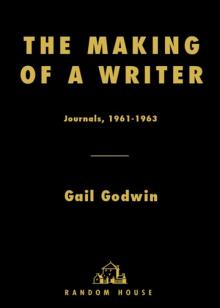 The Making of a Writer
The Making of a Writer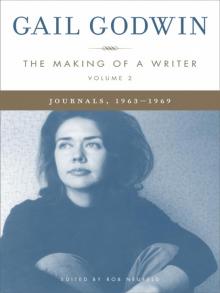 The Making of a Writer, Volume 2
The Making of a Writer, Volume 2 Old Lovegood Girls
Old Lovegood Girls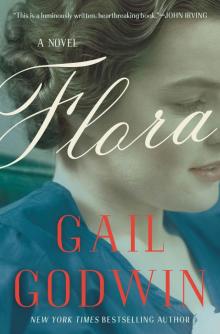 Flora
Flora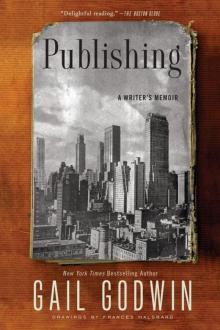 Publishing
Publishing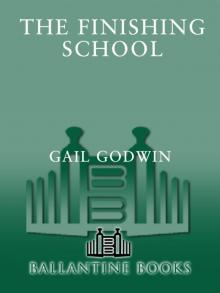 The Finishing School
The Finishing School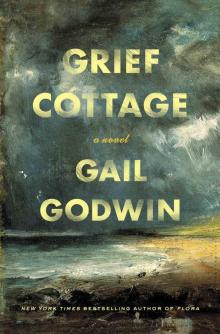 Grief Cottage
Grief Cottage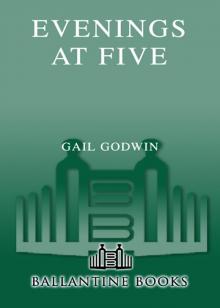 Evenings at Five
Evenings at Five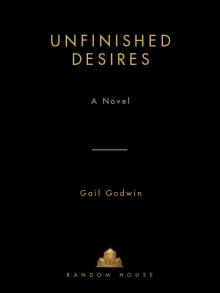 Unfinished Desires
Unfinished Desires